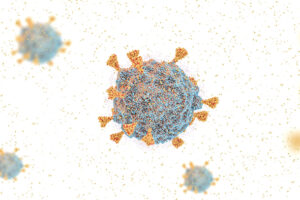Infectious Diseases
Influenza
Visual Indications of Infections and Their Mimickers
Overview
In an on-demand session titled “Visual Diagnosis of Infections and Their Mimickers” from the 2020 AAP Virtual National Conference & Exhibition, Kimberly Horii, MD, FAAP, and Angela Myers, MD, MPH, FAAP, discussed the dermatologic and clinical findings associated with various underlying infectious diseases, as well as other diagnoses that could mimic infections and ways to differentiate among them.
Following the presentation, our featured expert, Tina Q. Tan, MD, FAAP, FIDSA, FPIDS, was interviewed by Conference Reporter Editor-in-Chief Tom Iarocci, MD. Dr Tan’s clinical perspectives on this session are presented here.
Tina Q. Tan, MD, FAAP, FIDSA, FPIDS
|
|
“For those with suspected influenza infection and a rash, you need to think about other viruses that could co-infect with the influenza or reconsider whether the patient has influenza at all.”
As illustrated by the cases and differential diagnoses in this session, there are many overlapping signs and symptoms caused by many viral and bacterial infections that can complicate the diagnosis of viral infections in pediatrics. In particular, there are a number of dermatologic manifestations to consider. Although there are reports in the literature of rash being linked to influenza in school-aged children, my experience does not reflect this, as I have rarely seen a patient with influenza who has a rash or an exanthem. Thus, for those with suspected influenza infection and a rash, you need to think about other viruses that could co-infect with the influenza or reconsider whether the patient has influenza at all. Possible co-infecting viruses include rhinovirus, enterovirus, adenovirus, and coxsackievirus, and these can co-occur with influenza fairly commonly.
If a patient presents with conjunctivitis and a fever, depending on other aspects of the presentation, you might consider adenovirus infection or possibly Kawasaki disease, incomplete (atypical) Kawasaki disease, or multisystem inflammatory syndrome in children. Multisystem inflammatory syndrome in children mimics Kawasaki disease, atypical Kawasaki disease, and toxic shock syndrome, with maculopapular rash being the most common rash observed. Staphylococcal scalded skin syndrome can sometimes be confused with Stevens-Johnson syndrome (SJS) in the early stages, but children with SJS are really sick and the desquamation pattern is a bit different between these syndromes. You usually only get very superficial mucosal involvement with Staphylococcal scalded skin syndrome, whereas with SJS, which can be linked to viral infections, you can see very deep and very extensive mucosal involvement.
Although data are limited, COVID-19 infection in children can be associated with a rash that looks very similar to that seen with other viruses. A recent national survey in Spain described the clinical presentations of dermatologic manifestations in patients with suspected COVID-19. Mean patient age for the various presentations reflected a primarily adult population overall. Of those cases of COVID-19 that were associated with dermatologic findings, the most common were maculopapular eruptions, occurring in 47% of patients, with a mean age of 55.3 ± 20.2 years. A fairly large percentage of the identified patients (19% of dermatologic cases) reported COVID fingers and toes, which is basically an acral erythema and edema of the toes and hands (pseudo-chilblain). Further, 19% of patients had urticarial lesions and 9% had vesicular-like rashes. There were even necrotic lesions or livedo reported in 6% of patients, mostly seen in older patients with more severe disease. These findings suggest that the most common COVID-related manifestation is a maculopapular rash that is indistinguishable from other maculopapular rashes seen with other viruses. This highlights the importance of viral testing to identify the underlying cause.
References
Bursal Duramaz B, Yilmaz Yozgat C, Yozgat Y, Turel O. Appearance of skin rash in pediatric patients with COVID-19: three case presentations. Dermatol Ther. 2020 May 15;e13594. doi:10.1111/dth.13594
Casas CG, Català A, Carretero Hernández C, et al. Classification of the cutaneous manifestations of COVID-19: a rapid prospective nationwide consensus study in Spain with 375 cases. Br J Dermatol. 2020;183(1):71-77. doi:10.1111/bjd.19163
Centers for Disease Control and Prevention. Clinical signs and symptoms of influenza. Accessed October 15, 2020. https://www.cdc.gov/flu/professionals/acip/clinical.htm
Diorio C, Henrickson SE, Vella LA, et al. Multisystem inflammatory syndrome in children and COVID-19 are distinct presentations of SARS-CoV-2. J Clin Invest. 2020:140970. doi:10.1172/JCI140970
Drago F, Ciccarese G, Gasparini G, et al. Contemporary infectious exanthems: an update. Future Microbiol. 2017;12:171-193. doi:10.2217/fmb-2016-0147
Horii K, Myers M. Visual diagnosis of infections and their mimickers. On-demand session presented at: 2020 American Academy of Pediatrics Virtual National Conference & Exhibition; October 2-5, 2020.
Kaley J, Pellowski DM, Cheung WL, Hiatt KM. The spectrum of histopathologic findings in cutaneous eruptions associated with influenza A (H1N1) infection. J Cutan Pathol. 2013;40(2):226-229. doi:10.1111/cup.12039
Keighley CL, Saunderson RB, Kok J, Dwyer DE. Viral exanthems. Curr Opin Infect Dis. 2015;28(2):139-150. doi:10.1097/QCO.0000000000000145
Rosenberg M, Tram C, Kuper A, Daneman N. Rash associated with pandemic (H1N1) influenza. CMAJ. 2010;182(3):E146. doi:10.1503/cmaj.091678
Skowronski DM, Chambers C, Osei W, et al. Case series of rash associated with influenza B in school children. Influenza Other Respir Viruses. 2015;9(1):32-37. doi:10.1111/irv.12296
This information is brought to you by Engage Health Media and is not sponsored by, nor a part of, the American Academy of Pediatrics.











